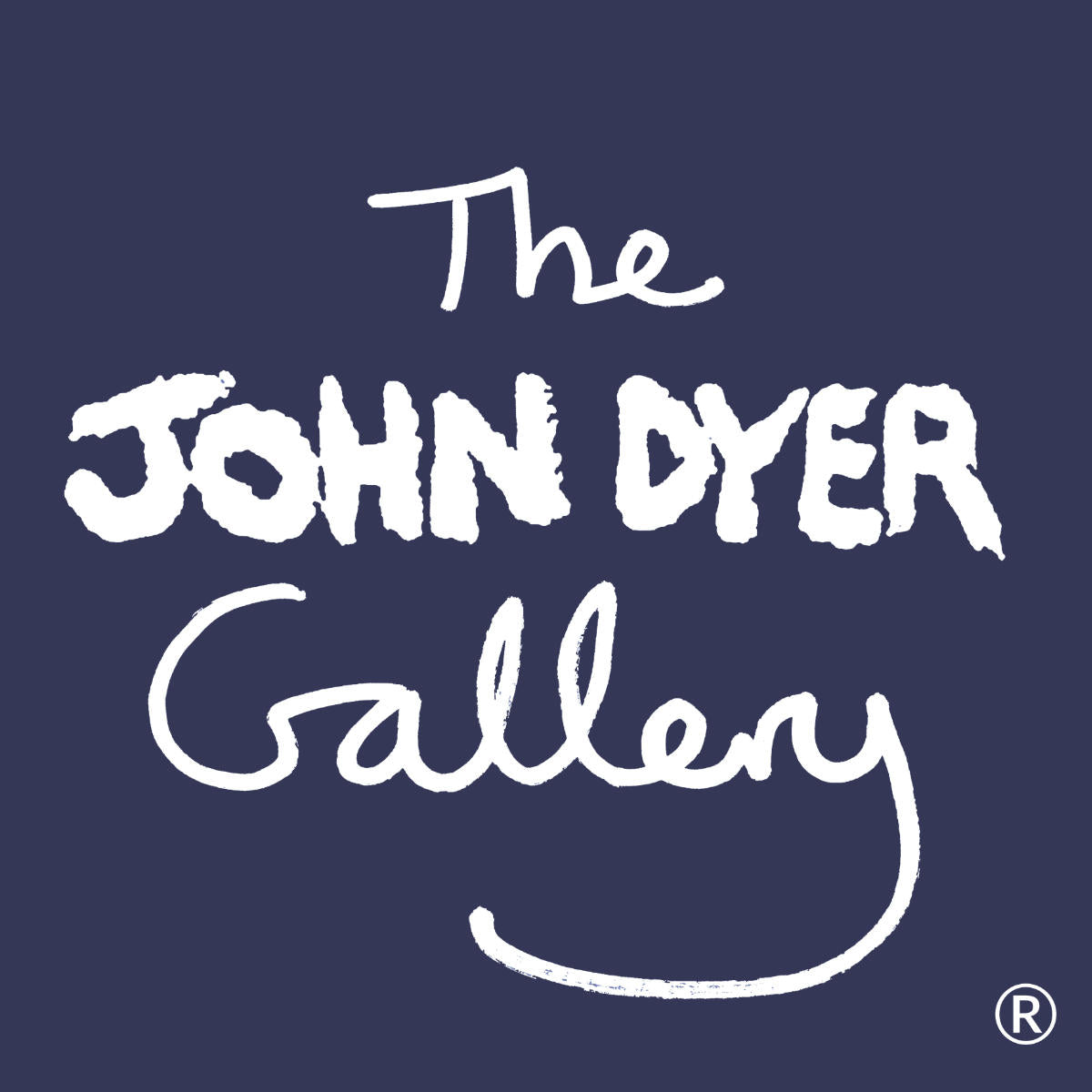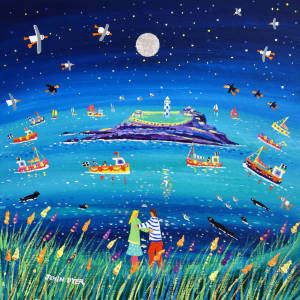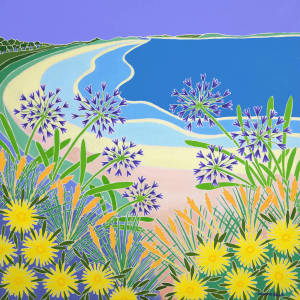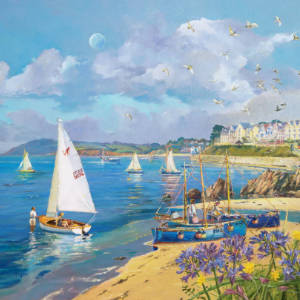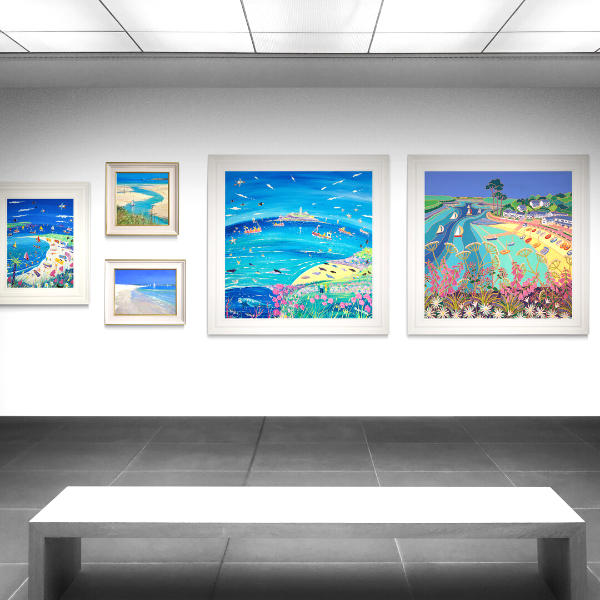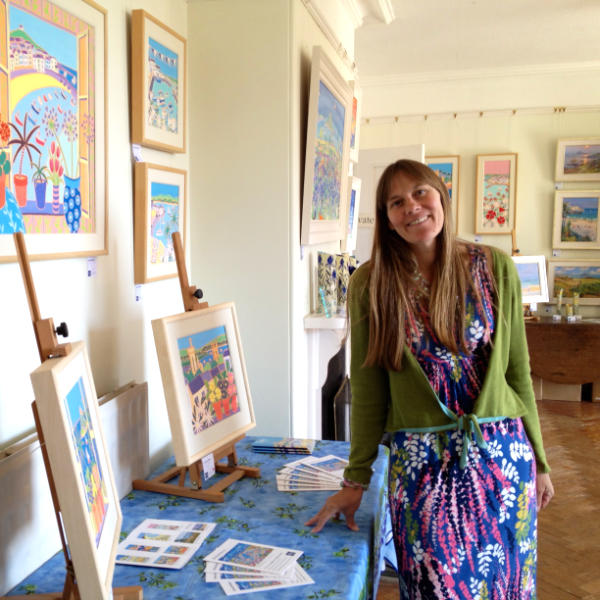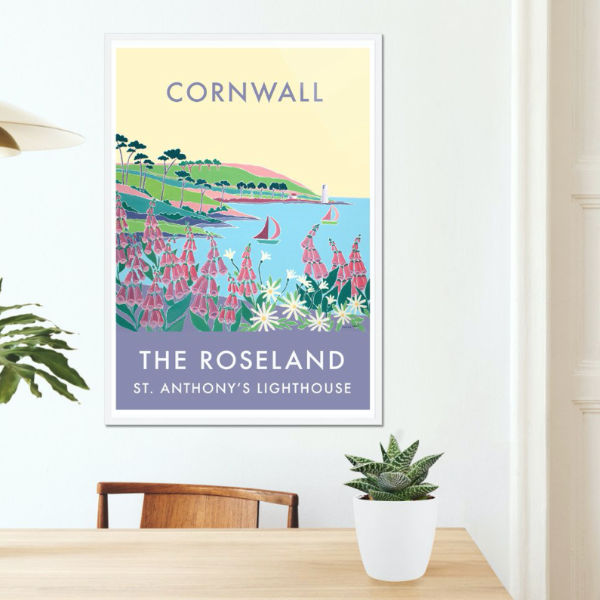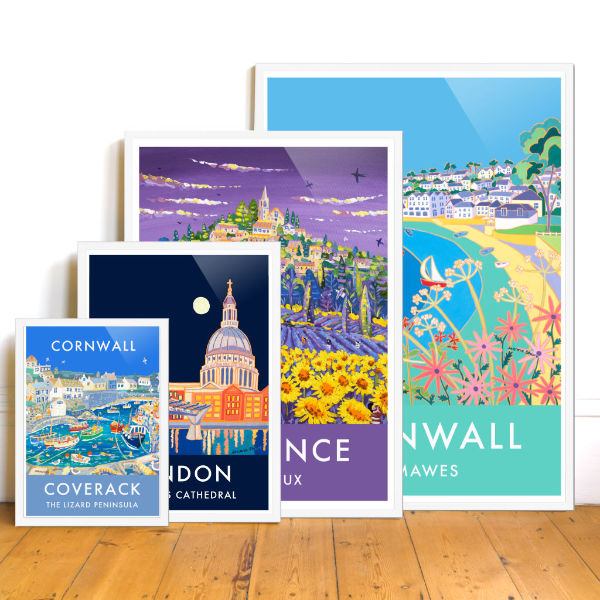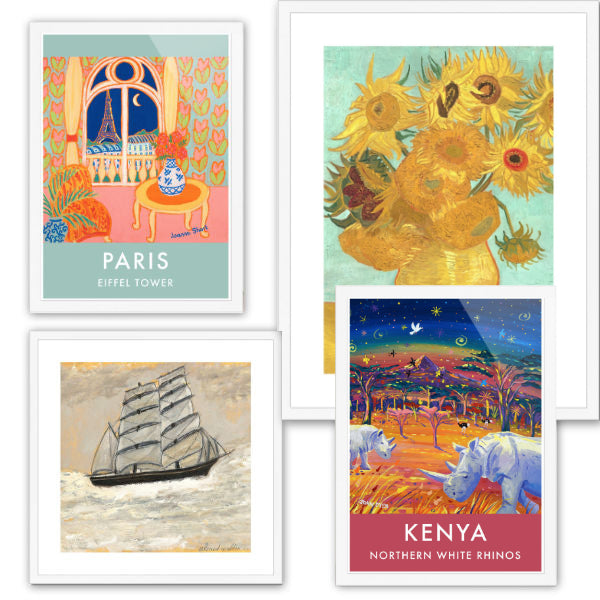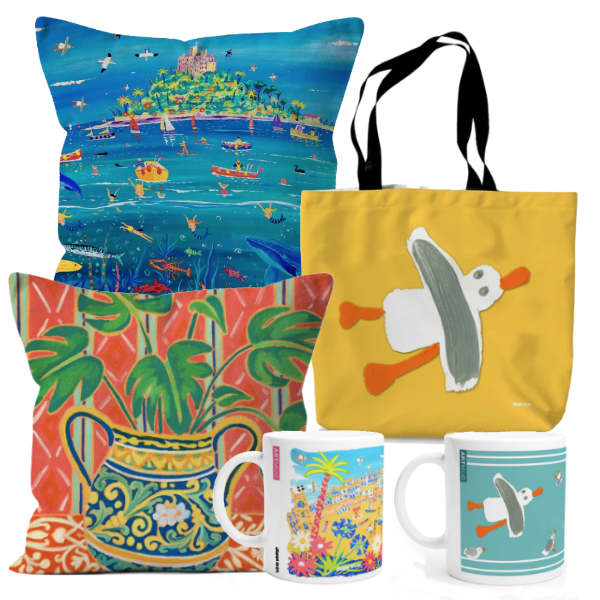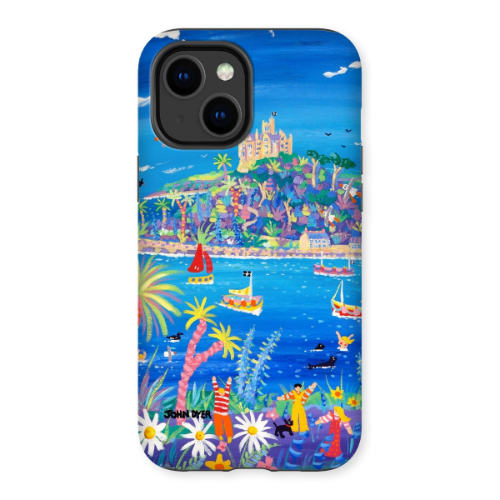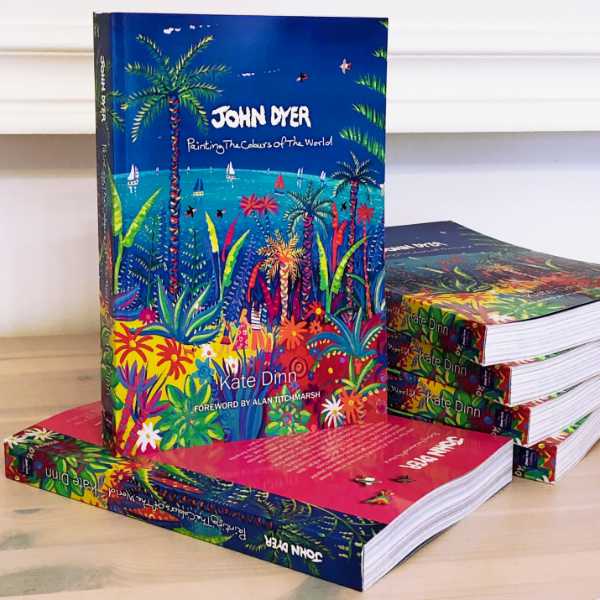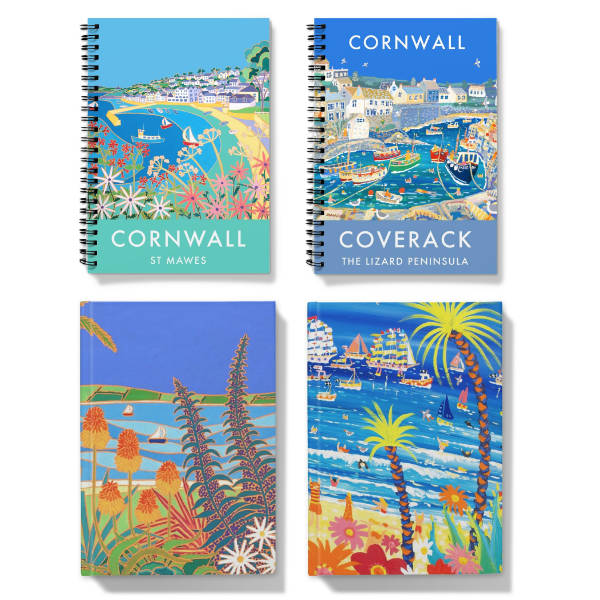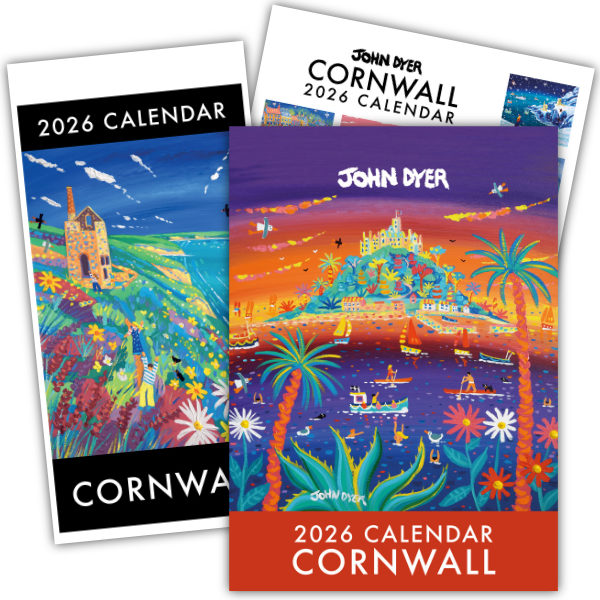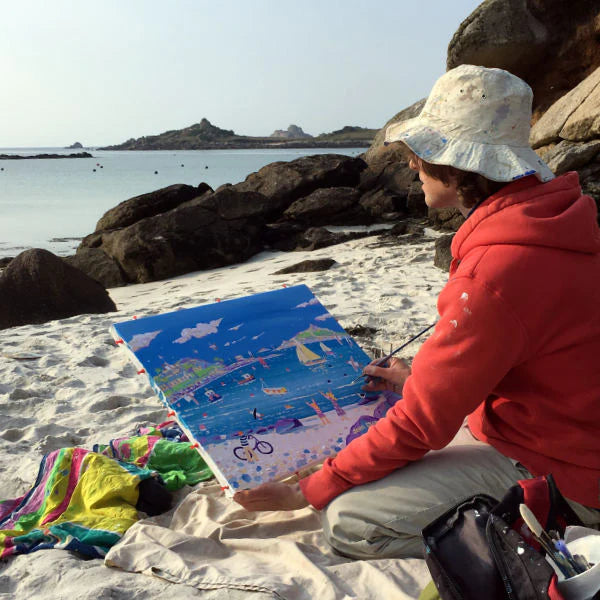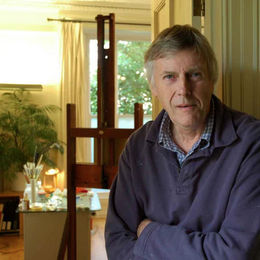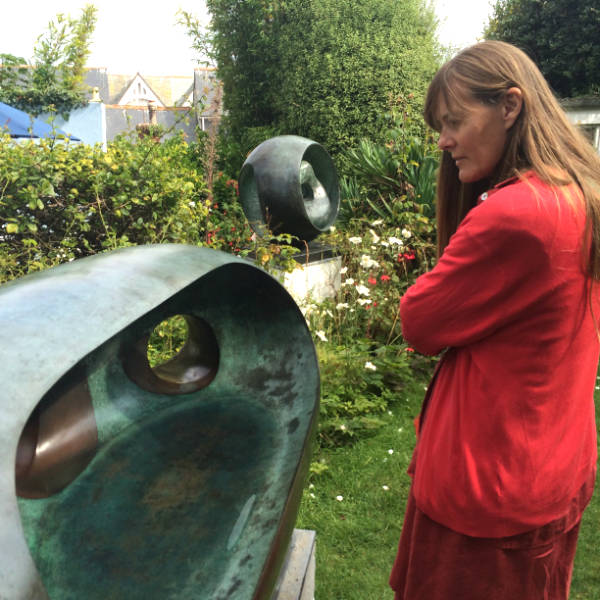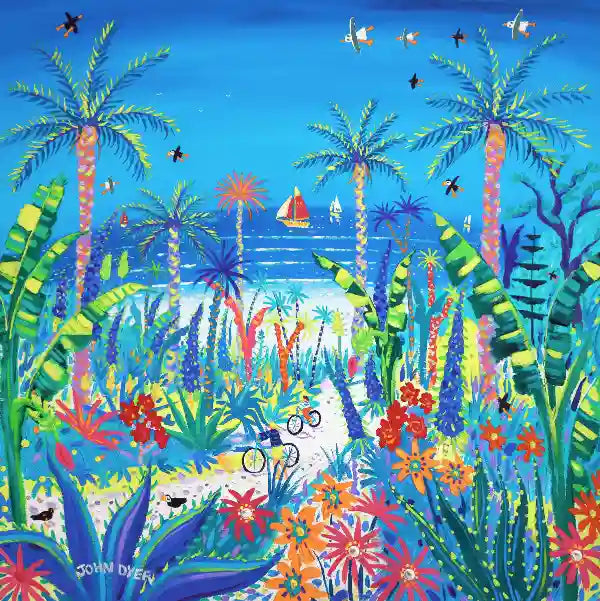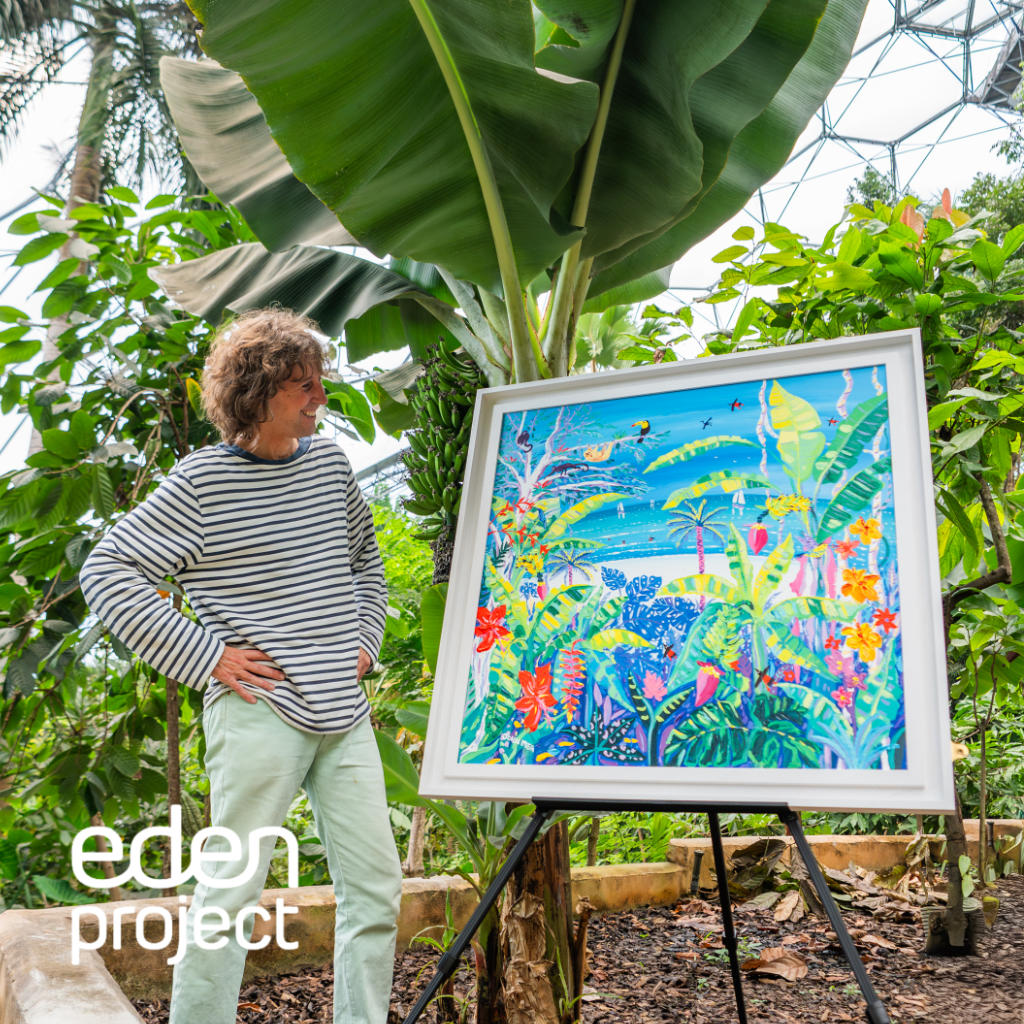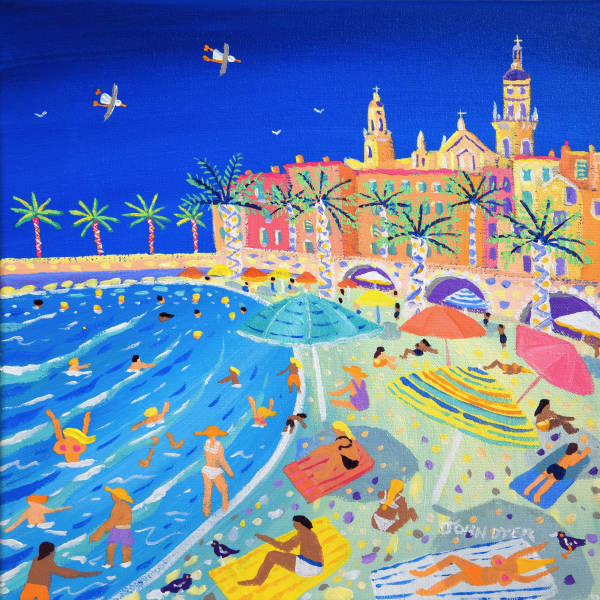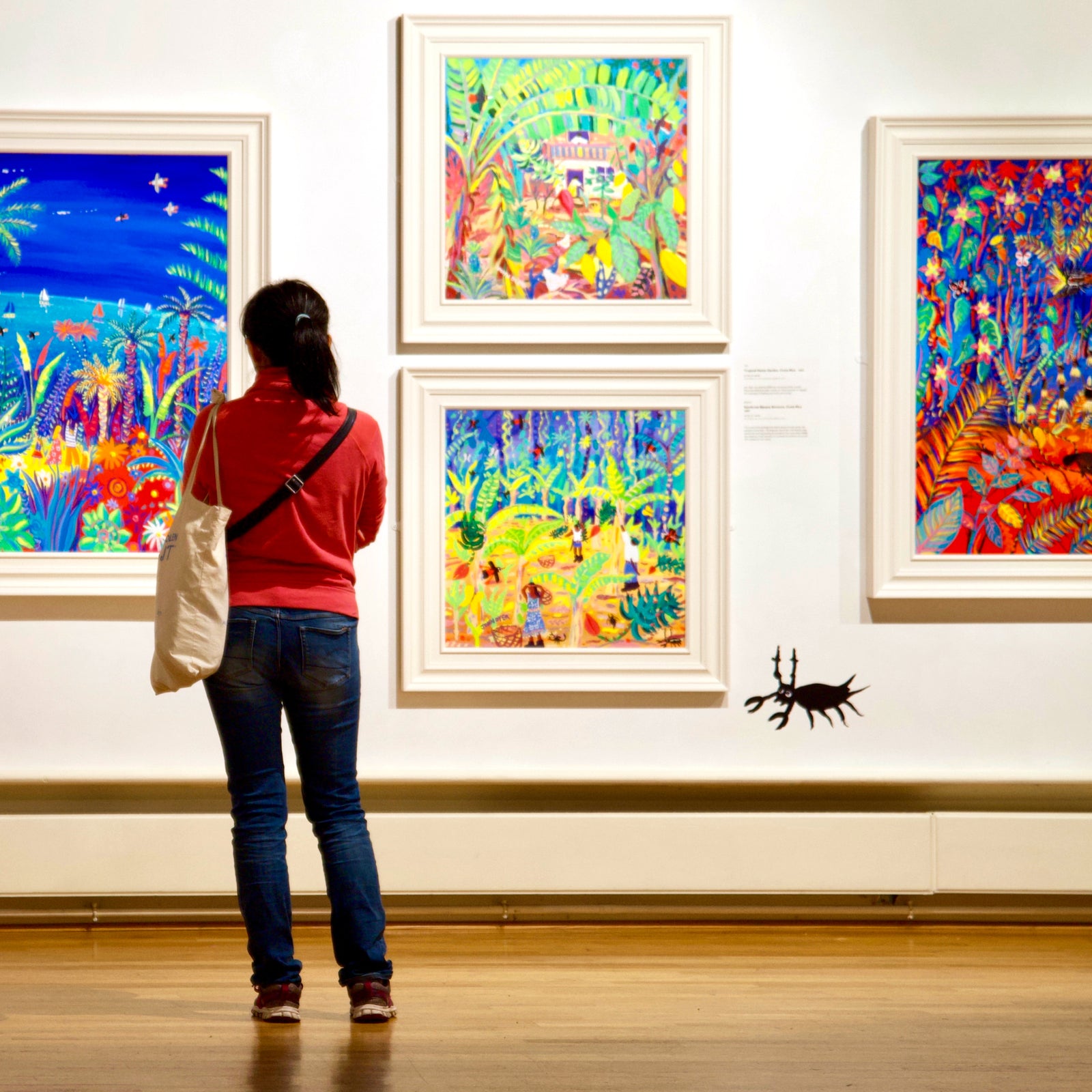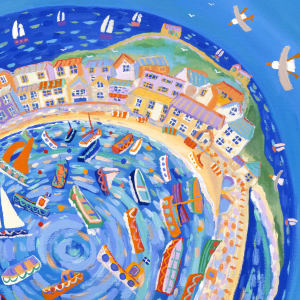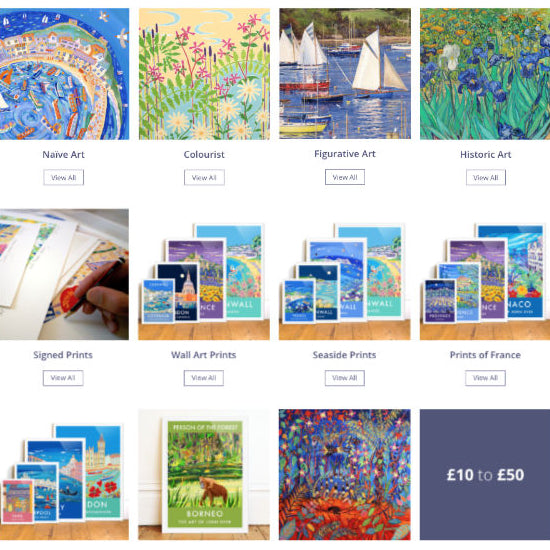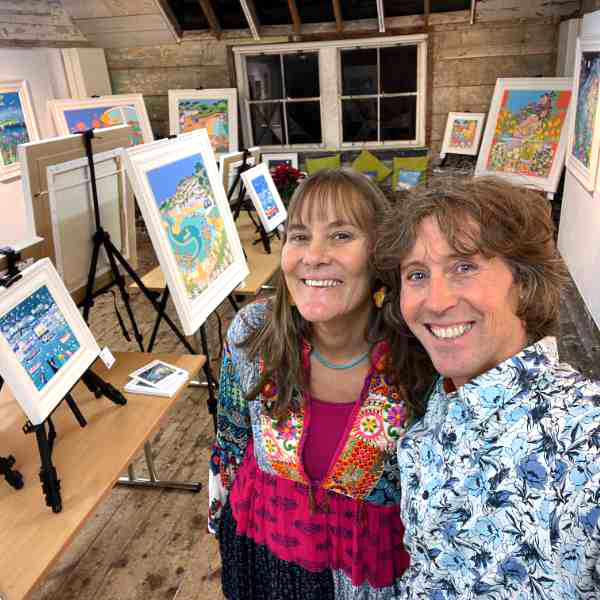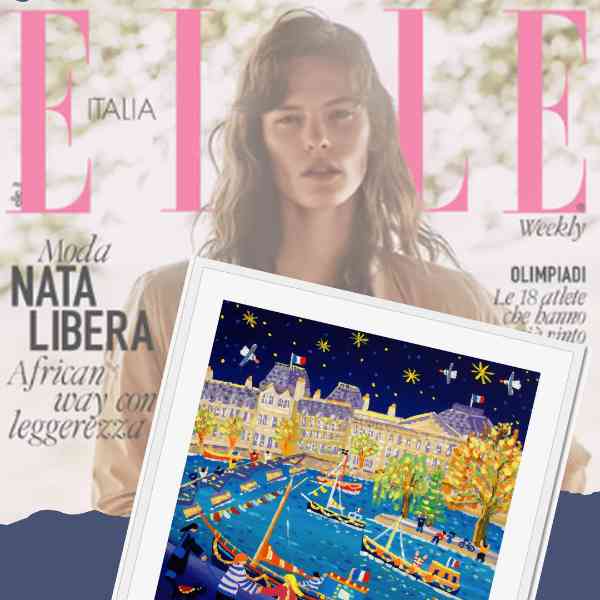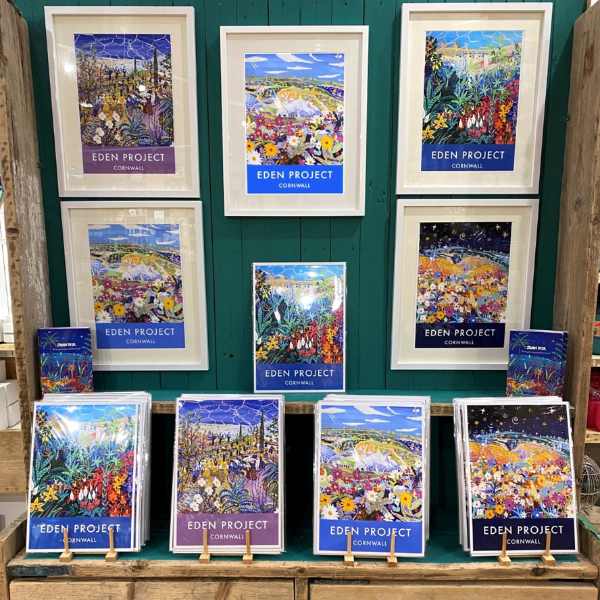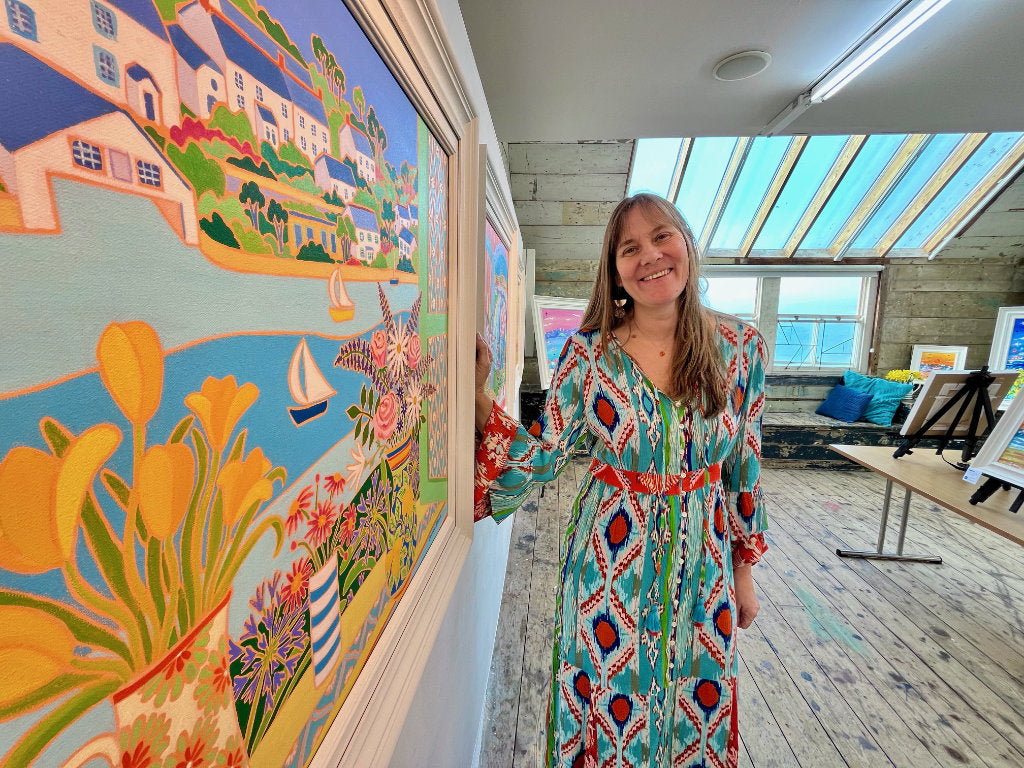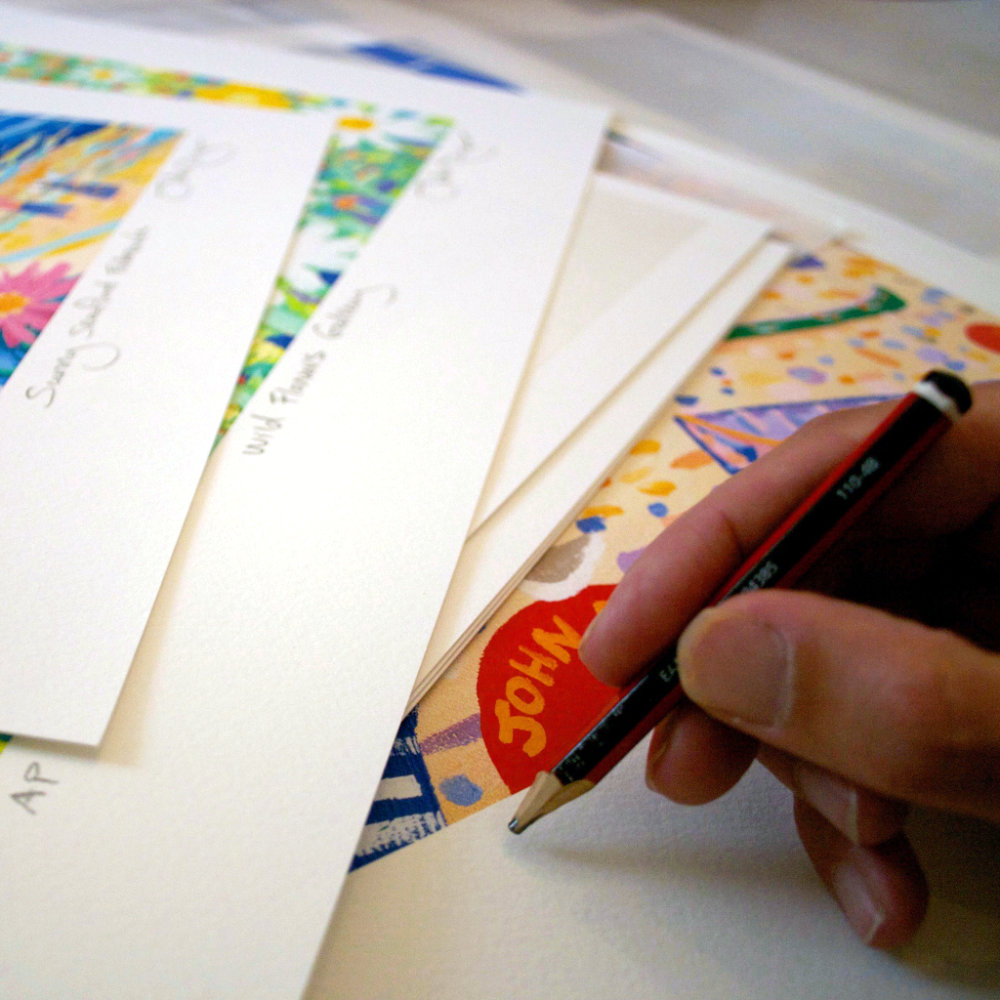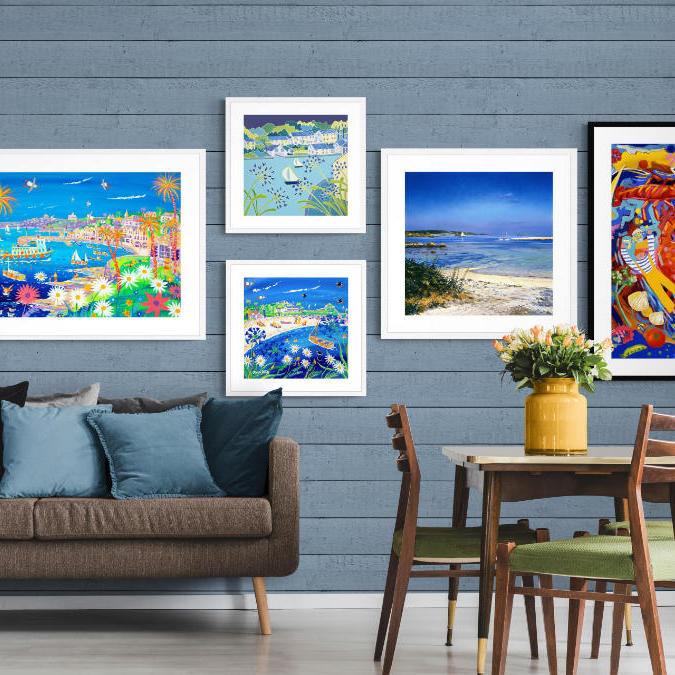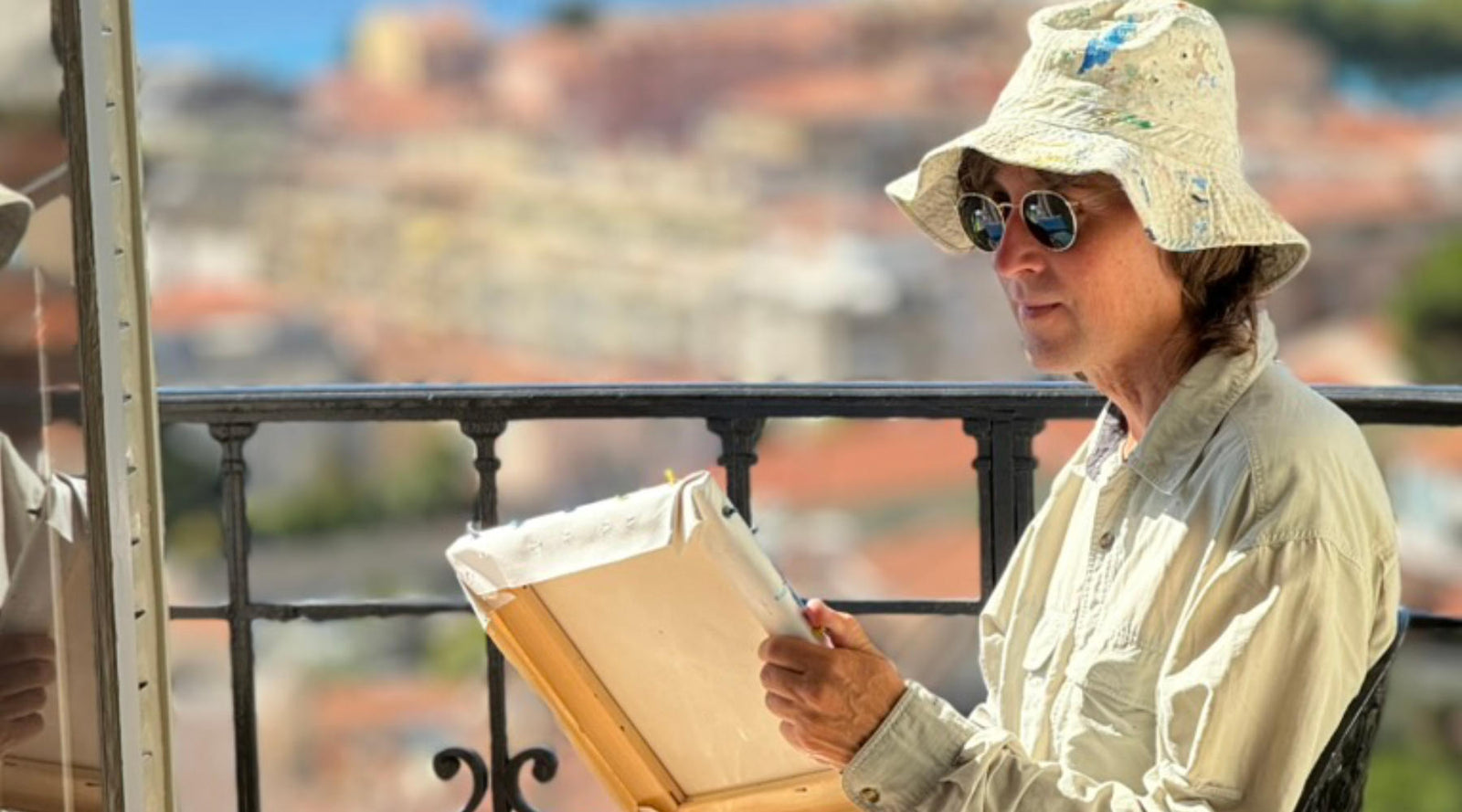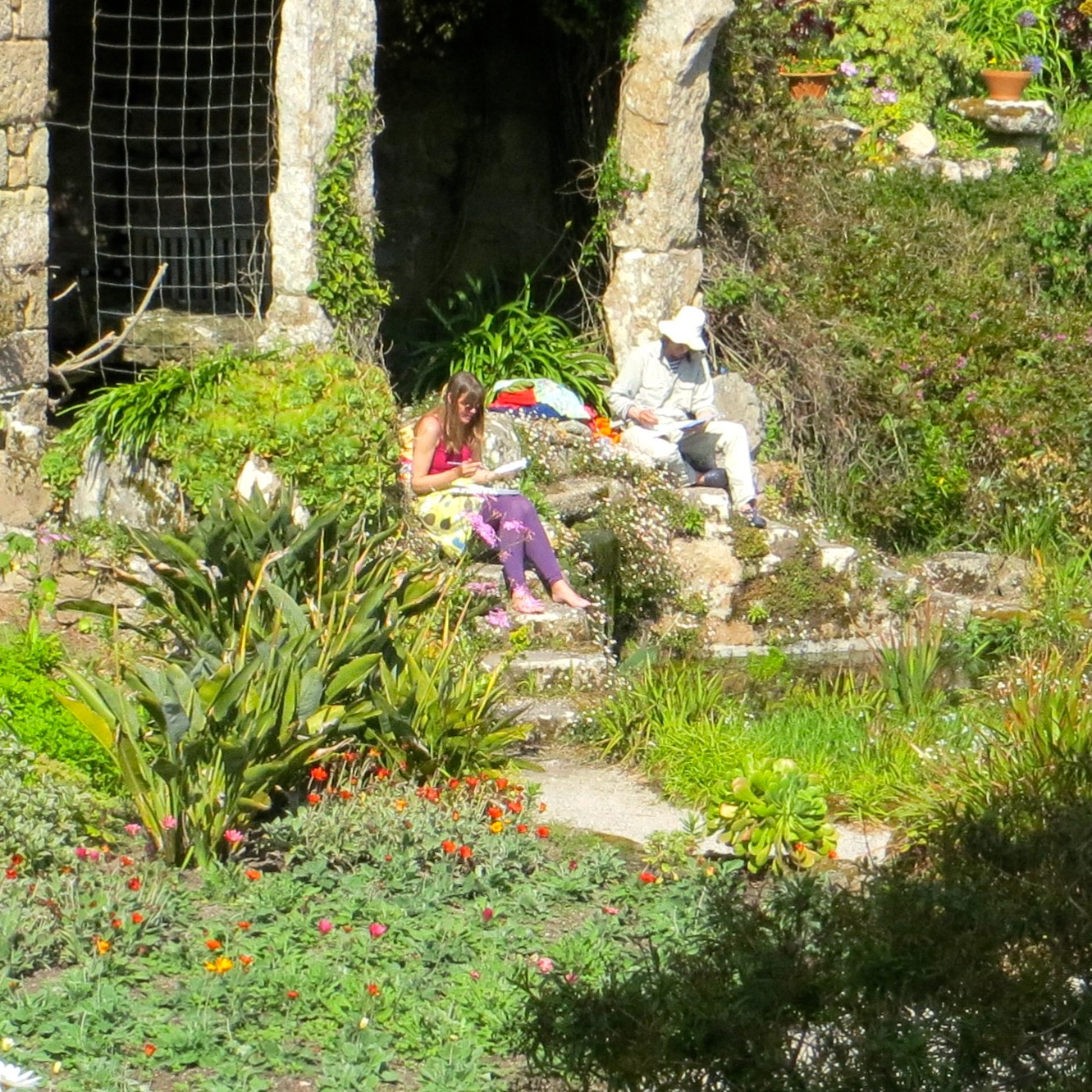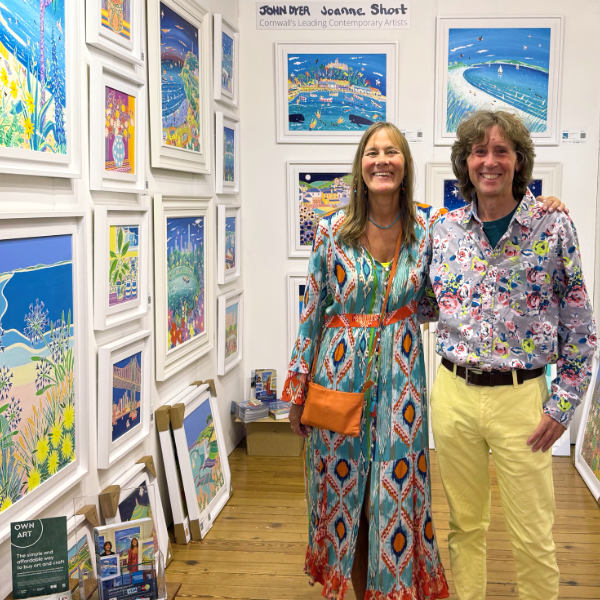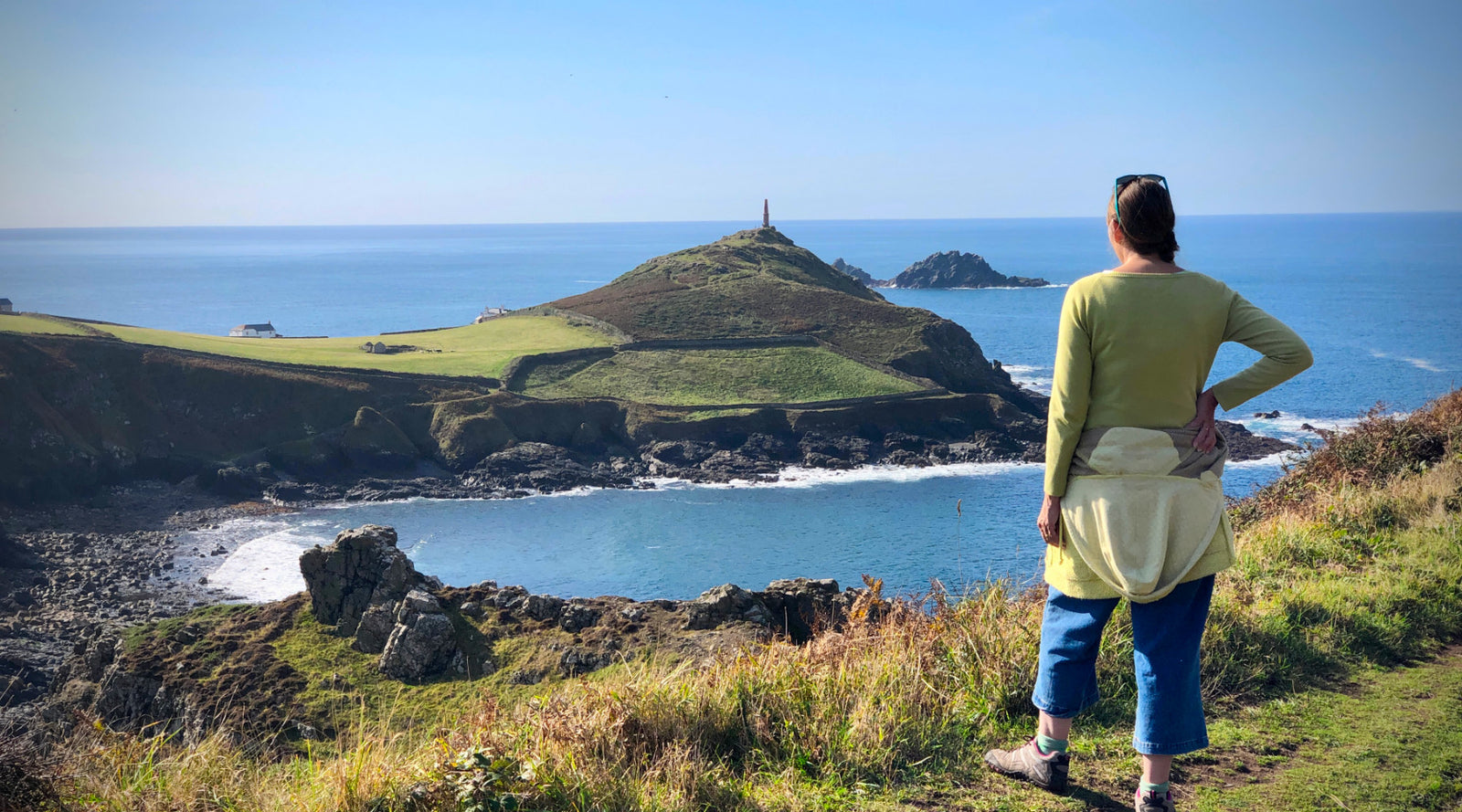
Above: Artist Joanne Short standing on the cliffs looking back to Cape Cornwall
In this blog post we have been following artists John Dyer and Joanne Short on their Cornish adventures as they walk parts of the South West Coast Path, creating coastal art, painting and drawing as they go. Cornish artist Joanne Short talks about what they have seen and how this has inspired them to create new and exciting paintings.
Cape Cornwall
Situated down in the depths of Penwith, at the very toe of Cornwall, some of the most rugged and spectacular coastline of the UK can be found; also some of the most beautiful and inspiring landscapes for an artist to paint. This area is the heart of the historical mining industry Cornwall is famous for. Old engine houses can be seen teetering on the edge of the cliff tops. Perched on the top of Cape Cornwall itself is an iconic tall chimney stack, The Heinz Monument, which dates from 1864 and was part of the Cape Cornwall Mine; it is now a UNESCO World Heritage Site. In the sea behind are The Brisons, two offshore rocks, about a mile southwest of the headland.

Above: Cornish artists Joanne Short and John Dyer exploring Cape Cornwall
When John and I set out on a Cornish coastal walk we know that it will always take us longer than the average hiker! We find ourselves stopping around every bend in the path as yet another breathtaking view is revealed; it is all a feast to the eye and we always need to stop and take photos and make drawings ready to get back to the studio and get it all down as coastal art on canvas.

Above: This is an ink pen drawing of Cape Cornwall by Joanne Short. Joanne likes to draw in her sketchbook before working on her final oil paintings.
We walked away from the Cape in the direction of Botallack. Turning around at the top of the hill we were amazed at the view behind us with the sweep of the bay and the unforgettable shape of the Cape headland, with the sparking blue sea behind. Time to get drawing!
Above: Joanne Short's Painting. 'Wild Cornish Flowers, Cape Cornwall'. 12 x 12 inches oil on canvas
Kenidjack Valley

Around the headland we find ourselves in the Kenidjack valley, a steep valley running from the small town of St Just, down to the sea. The river running down the valley has left a myriad of colours, as over the years various mineral deposits from the mining industry have been left behind on the rocks. Again the colours are spectacular. John recreates this back at the studio in his iconic style, in acrylic paint on canvas - better than any photograph!
Above: 'Blackberry Picking under the Stars, Cape Cornwall'. 24x24 inches acrylic on canvas by John Dyer
Botallack and The Crowns
Next up, the amazing view of the mine workings called The Crowns. These engine houses perch on the rocks The Three Crowns, from which the mines get their name. The shafts below run a mile underground beneath the seabed. Both copper and tin were excavated here. This is now part of the Cornish Mining World Heritage Site. As we stand and admire the view we start to imagine what it would have been like working underground beneath the sea.

Above: This is a page from Joanne Short's sketchbook showing her pen and ink drawings of Botallack and Pendeen Lighthouse that she used to inform and create her paintings.
Above: Joanne Short's Painting. Rugged Cornwall, Botallack. 12x12 inches oil on canvas
Both John and I found the image of these engine houses breathtaking. Everything about their placement on the edge of the cliffs and the colour of the sea below was just waiting to be painted.
Above: 'Shooting Stars over Botallack'. 33x40 inches acrylic on board by John Dyer
Following the pandemic lockdown we were starting to remember what it is about Cornwall, and the beauty of its coastline, that we love so much. We were surrounded by wildflowers and plants and the most amazing scenery.
Zennor to Gurnard’s Head
The following day, having already got a taste for inspiring images ready to build up a collection of paintings, we headed back down to Penwith, this time starting at the old village of Zennor and making our way along the coast in the direction of Gurnard’s Head.
Zennor lies between St Just and St Ives and is one of the last places in Cornwall where the Cornish language was spoken. The church, St Senara, is famous for its role in the legend of The Mermaid of Zennor, which tells the tale of the son of the Church warden being enticed into the Atlantic Ocean by a mermaid, never to be seen again. There is a seat inside the church with the engraving of a mermaid on it with a comb and mirror in her hands. Those of you who are already lovers or collectors of John’s work will probably have spotted many a mermaid in his fantastic, colourful paintings and prints!
We left the village of Zennor and headed towards Zennor Head - what a view! White sand beneath a turquoise sea; a sight to behold. It’s difficult, even for colourists like ourselves, to recreate the colours of the sea in this stunning area of coastline. We headed in the direction of Gurnard’s Head, so named because its shape resembles that of the Gurnard fish head. The footpath here was quite uneven and a little more challenging than previous walks, but the views and sunshine more than made up for that! There are several benches perched along the path, perfect for a well earned picnic.

Above: Cornish artist John Dyer standing on the coast path with Zennor Head behind
As we headed inland we spotted the unmissable bright yellow of the Gurnard’s Head Pub - just the place for a Cornish cider, before heading back across the fields to our starting point in Zennor. The fields around that area have an incredible history. They are said to date back to the Bronze Age, with ancient walls surrounding small fields, which were small enough to be manageable, all surrounded by hand built immaculate stone walls. It is a truly magical place which John captures beautifully in his acrylic painting 'Magical Night, Zennor'.
Above: John Dyer's original painting, 'Magical Night, Zennor'. 24x36 inches original art acrylic on board
We had a fantastic time enjoying the beauty literally on our doorstep, and as a result were able to create a whole collection of paintings and prints which can be seen on The John Dyer Gallery where we have original oil and acrylic paintings, signed limited edition prints and vintage style posters available for sale, which include images of the area of Cornwall I have been talking about in this blog.
If you want to see Cornwall at its best, then I suggest getting out onto the coast path and enjoying it first hand. And if you want a piece of Cornwall to take home with you and put on your wall, visit our online gallery at www.johndyergallery.com for the latest selection of Cornish art, original paintings and prints.
Joanne Short
